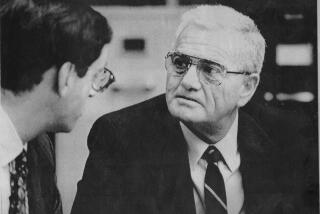Putting the Grim Sleeper behind bars
With the arrest of Lonnie David Franklin Jr., a former Los Angeles Police Department garage attendant and onetime garbage collector, a murder spree spanning more than two decades may be at an end. The investigation required extraordinary and painstaking police work, as well as community and political pressure and a unique use of DNA evidence. But before all that happened, Christine Pelisek, the LA Weekly reporter who dubbed California’s most enduring serial killer the Grim Sleeper, forced the city to care about a group of victims who had been largely forgotten by all but their families and a few LAPD detectives.
The murders, when they occurred between 1985 and 2003, barely garnered public notice. Wednesday, however, a news conference drew a throng to police headquarters: elected officials, local and national media, community activists and relatives of the 10 murdered women and one man, some clutching framed photos of their daughters, mothers and sisters.
The case involved efforts and innovations that stretch back years. City Councilman Bernard C. Parks opened what is believed to be the nation’s first cold case unit when he was the department’s chief. In 2007, then-Chief William J. Bratton established a task force devoted solely to catching the killer, and his successor, Chief Charlie Beck, made it his top priority. The City Council offered the largest reward in Los Angeles history — $500,000 — for information leading to an arrest. An innovative program launched by state Atty. Gen. Jerry Brown allowed for the “familial” DNA testing that ultimately led to Franklin.
But the urgency arose only after Pelisek reminded the public that over a period of 23 years, one man had killed 10 or more young black women in South Los Angeles — and he was still on the loose. This is not to disparage or diminish the extraordinary police work done by the LAPD. But good journalism certainly assisted in this case.
The arrest was made after detectives collected DNA from a pizza that Franklin had discarded and matched it to crime scene evidence. Brown and L.A. County District Atty. Steve Cooley say that they worked within strict legal protocols and that the use of the suspect’s DNA was entirely permissible. We’ll see. It may yet be challenged in court.
At the news conference, Parks reminded the victims’ families that a trying time awaits them; court proceedings will require them to relive in detail their suffering and loss. This time, however, will be different. “This time,” he said, “you all will have the city behind you.”
More to Read
Sign up for Essential California
The most important California stories and recommendations in your inbox every morning.
You may occasionally receive promotional content from the Los Angeles Times.










